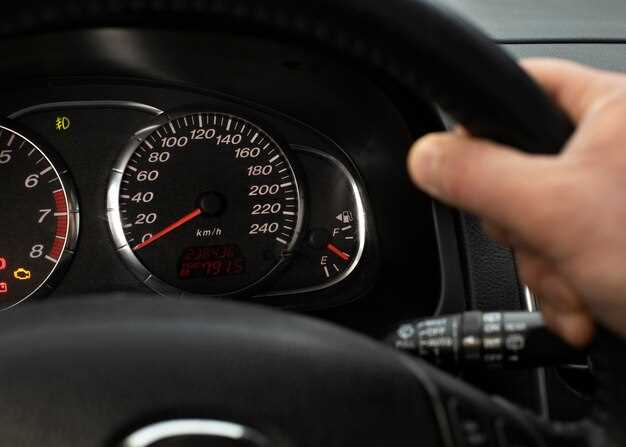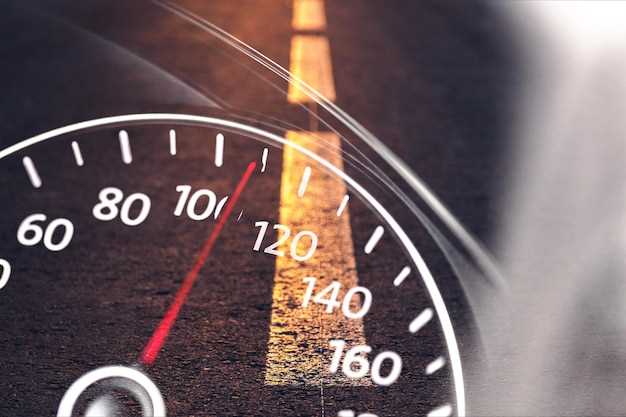
In the world of motorsports, the importance of Limited-Slip Differentials (LSD) cannot be overstated. These mechanical components play a pivotal role in enhancing vehicle performance, especially in track driving, where handling and traction can significantly impact lap times. A well-functioning LSD allows for optimal power distribution to the wheels, ensuring that racers can maintain control even during aggressive maneuvers.
Unlike traditional open differentials that allow wheels to spin at different rates, LSDs provide a balance between speed and stability. This characteristic is crucial when navigating tight corners, where one wheel might be inclined to lose grip. By limiting the difference in speed between the left and right wheels, LSDs offer better traction, reducing the chances of understeer or oversteer.
Understanding how limited-slip differentials work, along with their various configurations, is essential for drivers seeking to maximize their performance on the track. This article delves into the mechanics of LSDs, their advantages, and how they can be tuned to suit specific driving styles and track conditions. Whether you’re a seasoned racer or a novice enthusiast, grasping the principles behind limited-slip differentials can elevate your driving experience to the next level.
How Limited-Slip Differentials Improve Traction on Curves

Limited-slip differentials (LSDs) play a crucial role in enhancing traction, especially when navigating curves. Unlike open differentials, which allow the wheels to spin independently, LSDs distribute power more evenly across the driving wheels. This is particularly beneficial during cornering, where weight transfer can lead to uneven tire loading.
When a vehicle enters a turn, the outer wheel travels a greater distance than the inner wheel. An LSD helps to transfer some of the torque from the wheel with more grip (the outer wheel) to the wheel with less grip (the inner wheel). This action significantly improves traction on the curve, preventing wheel slip and loss of control.
The mechanism behind LSDs can vary, but most employ clutches or gears to manage the distribution of torque. For instance, clutch-type LSDs engage when a difference in wheel speed is detected, effectively locking the wheels together and maximizing traction. This means that even if one wheel begins to lose grip–that is, if it experiences slippage–the differential can still deliver power to the wheel with better traction, thereby improving stability during turns.
Furthermore, LSDs help maintain acceleration while cornering. Because the system can balance torque between the wheels, drivers can apply throttle earlier in a turn, allowing for faster exit speeds. This advantage is particularly valuable on the racetrack, where every fraction of a second counts.
In summary, limited-slip differentials enhance traction on curves by effectively managing torque distribution between the wheels. This leads to improved grip, better stability, and increased acceleration, making LSDs an essential component for performance driving.
Identifying the Best LSD Type for Your Track Vehicle
Choosing the appropriate limited-slip differential (LSD) for track driving is crucial for maximizing performance and handling. The right LSD can significantly enhance traction, cornering stability, and overall driving experience. Here’s what to consider when identifying the best LSD type for your track vehicle:
- Types of LSD: Familiarize yourself with the main types of LSDs available:
- Torque-Vectoring LSD: Offers dynamic distribution of torque between wheels, enhancing cornering capability.
- Clutch-Type LSD: Uses clutches to allow for torque transfer. Ideal for high-performance vehicles and excellent for track use.
- Spool LSD: Provides maximum lock under acceleration but is not suitable for street use due to its unpredictable handling characteristics.
- Viscous LSD: Utilizes a viscous fluid to transfer power. Less aggressive than other types, making it suitable for moderate driving.
- Driving Style: Consider your driving style and technique.
- For aggressive drivers who require sharp cornering, a clutch-type LSD may be the best option.
- If your style is smoother and more gradual, a viscous LSD may provide better overall balance.
- Track Type and Conditions: Analyze the characteristic of the track where you will be driving most often.
- A technical track with tight corners may benefit from a torque-vectoring LSD.
- On fast tracks with extended straights, a spool LSD could be beneficial for maximizing power delivery.
- Vehicle Specifications: Examine your vehicle’s power and weight distribution.
- A higher power output may require a more robust LSD solution for effective traction.
- Consider the weight distribution; a front-heavy vehicle may need a different LSD setup compared to a mid-engine layout.
- Maintenance and Adjustability: Evaluate the maintenance requirements and adjustability of the LSD.
- Clutch-type LSDs might require periodic maintenance, unlike viscous types, which are low-maintenance.
- Look for adjustable options if you want to fine-tune performance based on track conditions.
By considering these aspects, you will be better positioned to select the best LSD type for your track vehicle, ultimately leading to improved performance and driving enjoyment on the track.
Adjusting LSD Settings for Optimal Performance in Various Conditions

Limited-slip differentials (LSD) play a crucial role in enhancing traction and stability during track driving. Adjusting the LSD settings according to the specific conditions of the track can significantly impact vehicle performance. Understanding the various settings and their effects on handling is vital for any serious driver.
One of the primary adjustments is the preload settings of the LSD. A higher preload can provide better traction in high-speed corners, as it reduces wheel slippage. However, in conditions requiring more flexibility, such as tighter turns or surfaces with varying grip levels, a lower preload may allow for smoother transitions and better handling.
Another critical factor is the ramp angle of the LSD. A steeper ramp angle can lead to more aggressive engagement, which is beneficial in scenarios necessitating rapid acceleration out of corners. In contrast, a more gradual ramp angle may be preferable in wet or slippery conditions, allowing for more gradual power delivery to maintain control and minimize wheel spin.
Additionally, the type of clutch pack used in the LSD can affect how the differential behaves. For track driving on dry surfaces, a clutch pack with a more aggressive engagement may be favored. However, on damp or uneven surfaces, a softer engagement can provide a smoother driving experience, reducing the likelihood of losing control during directional changes.
Finally, regular evaluation of tire conditions and maintaining proper tire pressures is essential when adjusting LSD settings. Tire grip can greatly influence the effectiveness of the LSD setup, and ensuring optimal contact with the track surface allows for the best performance of the differential.
In summary, adjusting LSD settings for optimal performance requires careful consideration of preload, ramp angles, clutch pack types, and tire conditions. By tailoring these settings to match track conditions, drivers can enhance traction, stability, and overall lap times.
Common Myths About LSD Performance in Motorsports
Limited-slip differentials (LSD) are crucial components in motorsports, known for their ability to enhance traction and stability during cornering. However, several myths surround their performance that can mislead drivers and teams. One common misconception is that all LSDs provide the same level of grip under all conditions. In reality, the effectiveness of an LSD varies significantly based on its design – be it clutch-type, gear-type, or electronic. Each type responds differently to the forces experienced during high-speed maneuvers, making them suitable for specific racing applications.
Another myth is that choosing a stiffer LSD will always improve lap times. While a stiffer setup can reduce wheelspin, it may also lead to a loss of traction on uneven surfaces or in wet conditions. Balance and adjustability are key; drivers should select LSD settings based on track conditions and vehicle dynamics rather than adhering to a one-size-fits-all approach.
Additionally, some believe that an LSD will compensate for poor driving technique. While LSDs enhance performance by distributing power effectively, they cannot correct mistakes made during cornering or braking. Skilled driving combined with a well-tuned LSD will yield the best results on the track.
There is also a myth that LSDs are maintenance-free. Over time, wear and tear can affect their performance. Regular inspections and maintenance are necessary to ensure that the differential remains in optimal condition, as neglecting this aspect can lead to decreased effectiveness and increased wear on other drivetrain components.
Finally, many think that installing an LSD will immediately make them faster. While an LSD can improve traction and handling, overall performance gains also depend on factors like suspension setup, tire choice, and driver skill. Understanding how these elements interact is crucial for maximizing the benefits of an LSD in motorsports.
Maintenance Tips for Longevity of Your Limited-Slip Differential
To ensure the optimal performance and longevity of your limited-slip differential (LSD), regular maintenance is essential. Here are some effective tips to keep your LSD in top condition:
| Maintenance Task | Frequency | Description |
|---|---|---|
| Fluid Change | Every 30,000-50,000 miles | Regularly replacing the differential fluid helps remove contaminants and ensures proper lubrication. |
| Inspect Seals | Every 10,000 miles | Check for any wear or leaks in the seals that can lead to fluid loss, affecting overall performance. |
| Check for Symptoms of Wear | Monthly | Listen for unusual noises and feel for vibrations, which may indicate that the LSD needs servicing. |
| Use Recommended Lubricant | Always | Refer to the manufacturer’s guidelines for the specific type of fluid suitable for your LSD. |
| Adjust Preload Settings | As Needed | Ensure that the preload settings are within specifications to prevent excessive wear on the clutch packs. |
By following these maintenance tips, you can prolong the life of your limited-slip differential, ensuring stable performance during track driving. Regular checks and timely interventions will prevent significant issues and enhance your driving experience.
Comparing LSD with Open Differentials and Their Impact on Handling
The choice between limited-slip differentials (LSD) and open differentials significantly affects a vehicle’s handling characteristics, especially in track driving scenarios. Open differentials distribute power equally to both wheels but fail to maximize traction in low-grip conditions. This may lead to one wheel spinning freely when traction is compromised, resulting in a loss of acceleration and steering control.
In contrast, limited-slip differentials enhance traction by allowing controlled differences in wheel speed. When one wheel begins to lose grip, the LSD transfers power to the wheel with more traction. This capability not only improves acceleration out of corners but also enhances steering response, making the vehicle feel more planted and predictable during high-speed maneuvers.
The impact on handling is particularly evident during cornering. With an open differential, the outside wheel may lose grip while the inside wheel rotates faster, causing understeer and instability. In comparison, an LSD reduces this tendency, allowing for better cornering speed and agility. As the car rotates through a turn, the LSD helps maintain a smooth trajectory and ensures that power is effectively utilized, minimizing the risk of losing control.
Moreover, the performance enhancements provided by an LSD can be crucial when navigating a track with varying surface conditions. Whether it’s a wet pavement or an uneven surface, the LSD performs consistently to optimize traction, enhancing overall driving confidence and allowing drivers to push their limits without fear of sudden loss of control.
In summary, while open differentials might be sufficient for everyday driving, for track enthusiasts tightly focused on performance, switching to a limited-slip differential can vastly improve traction, handling, and overall driving experience.
